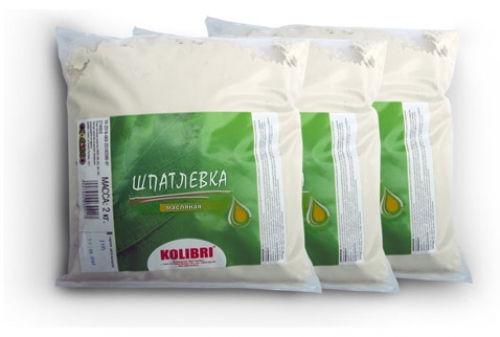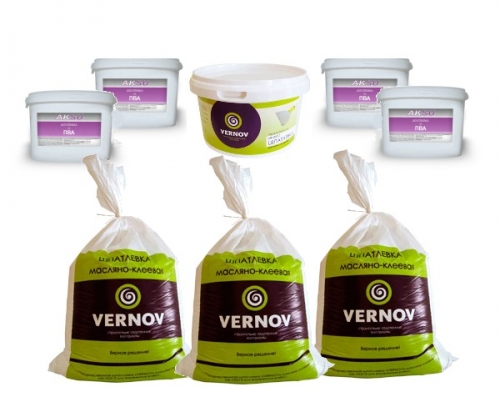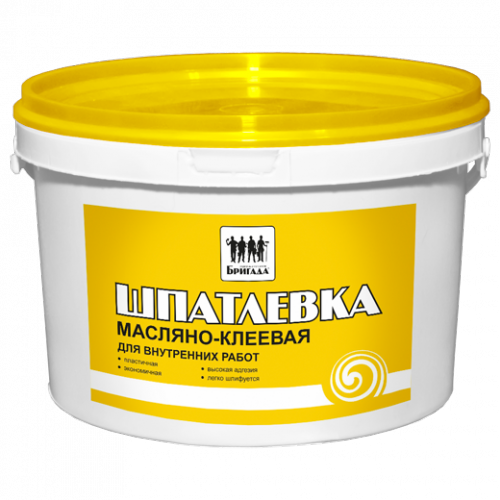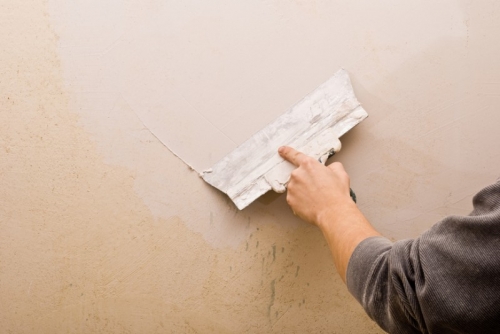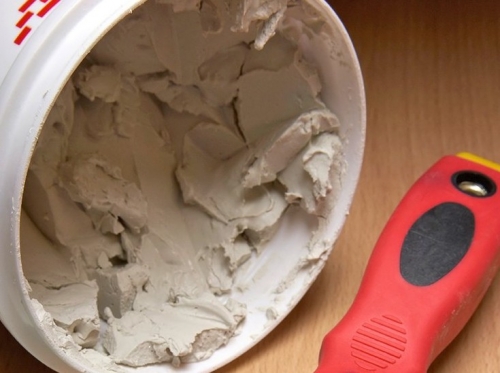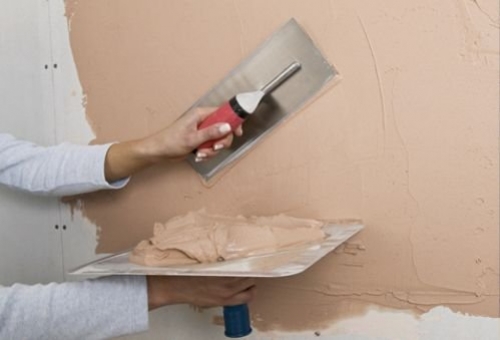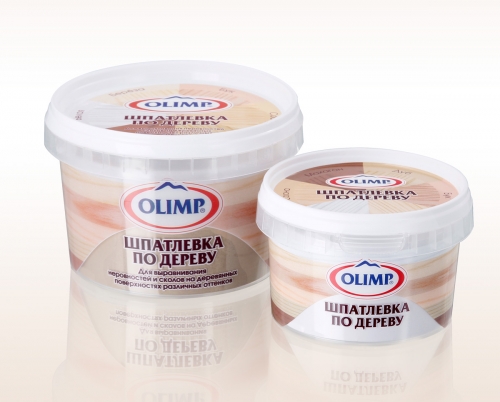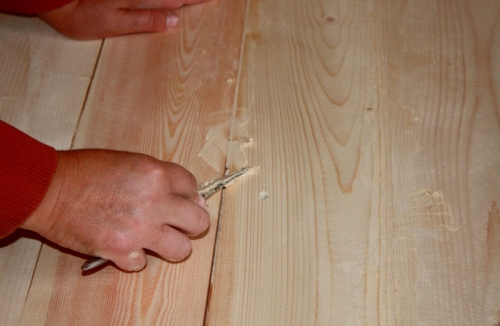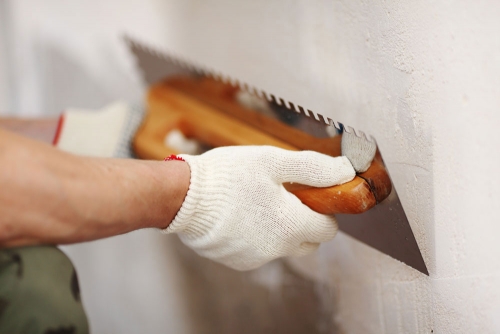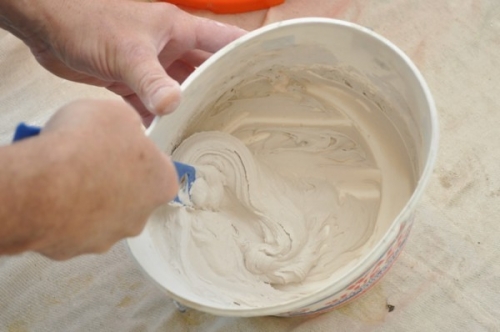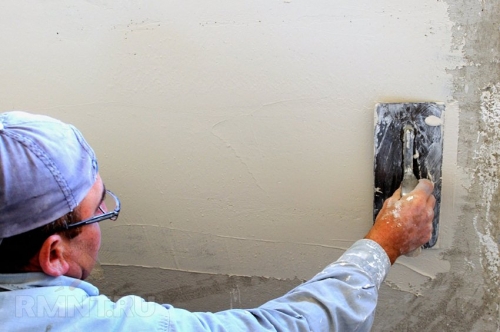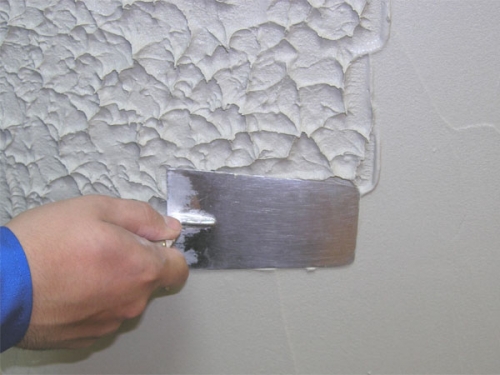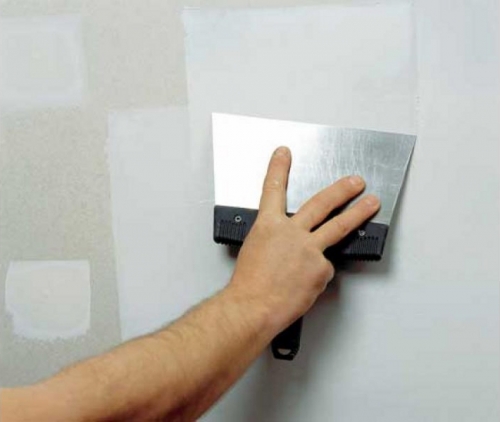Today, the popularity of the designs of suspended ceilings is undeniable. Such ceilings have ...
|
|
In construction, polycarbonate has been widely used recently. His... |
When building one -story houses, a roof with two ... is very popular ... |
Oil putty: Features of the material and technology of use
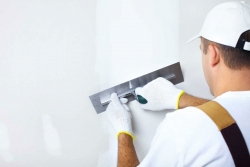
Before proceeding with the finishing measures, it is necessary to carefully prepare the walls and ceiling, making them perfectly smooth. This is an extremely important preparatory event, since the final impression of decorative decoration will depend on the quality of the work and, importantly, the operational period of the finish coating. The putty compounds presented in the modern market of finishing materials allow you to effectively level the finished surfaces, filling all existing cracks and irregularities. Despite the fact that the situation in the construction market is such that it is difficult for a novice master to understand the variety of putty compositions and choose the one that he needs, the most relevant aligning mixture is an oil putty, which is characterized by plasticity and a long -term operational period of the coating. However, there are also its pitfalls. Technologies do not stand still, and today you may encounter varieties of oil putty, which you can buy in any specialized store. What are the features of the oil putty and its varieties, in which case the actual oil putty or its modifications will be sorted out further.
Content
- Oil putty: features and composition of the material
- Mastery putty: Technical characteristics
- Advantages and disadvantages of oil and oil-cell putty
- The scope of the use of oil putty: the main directions
- Oil and oil-cell puttying technology
- Popular manufacturers: oil-roof putty
Oil putty: features and composition of the material
The currently current GOST 10277 from 1990 says that any putty composition is a viscous thick mass prepared on the basis of various connecting components with the addition of pigments and ennobleing substances. Oil putty is no exception and is a leveling composition made in the form of a pasty uniform mass, which is characterized by a dense consistency and uniformity of application, provided that it will be applied in 1-2 layers with a thickness of not more than 2 mm. The composition of the oil putty includes the following components:
- Olifa;
- Acrylates;
- Plasticizers;
- Hardeners;
- Coloring pigments;
- Fillers, most often represented by finely grinded chalk;
- Water.
Plasticizers and modifiers, added to the composition of oil putty, give it additional properties that have significance in certain situations. Thanks to their inclusion in the composition of the oil putty, the consumer can purchase the following varieties of oil putty mixture:
- Fireproof oil putty;
- Explosion -proof oil putty;
- Oil putty with increased moisture resistance.
Important!The inclusion in the composition of the putty mixture of coloring pigments also has its own value. Thanks to this, there is another variety of aligning composition of the oil type oil putty putty of increased whiteness. Their popularity in the market for paints and varnishes is due to their high covering ability.
Note! In addition to the above compositions, experts identify another, no less popular variety of oil putty. It is obtained by adding glue to the oil composition and is called the putty-red putty.
Each manufacturer, at its discretion, can include thickeners, modifying additives, antiseptic substances and pigments in the composition of the oil putty, due to which oil putty will acquire a certain color.
Mastery putty: Technical characteristics
Oil and oil-red putty are designed for internal work, such as aligning plastered, wooden or concrete surfaces before their direct coloring with enamel, water-dispersion or oil paints. Consider the main technical characteristics of these compositions:
Binder In this case, Olifa acts in the role of him;
Consistency The composition is a pasty mass of homogeneous consistency, devoid of extraneous inclusions;
Oil putty consumption subject to application in one layer with a thickness of not more than 1 mm, on average is 0.8-1.5 kg/m2;
The percentage of dry residue does not exceed 68-80 %;
Drying time It depends on whether this is a repeated layer or final drying. The drying time between the layers does not exceed 3-4 hours, while the final drying is no more than 24 hours;
The thickness of the layer Applications on average are 1-2 mm;
Storage conditions Oil putty should be stored at a temperature of at least 0 in a tightly closed container;
Best before date from 6 to 12 months.
Important! Due to the fact that each manufacturer reserves the right to produce products in accordance with the technical conditions accepted at each specific production, the technical characteristics of products of different manufacturers can be several variable.
Advantages and disadvantages of oil and oil-cell putty
Since in general, oil and oil-red putty are varieties of the same material, they are characterized by common advantages and disadvantages. Consider them in more detail.

Advantages of oil aligning compounds:
- Unlike most other putty compositions, aligning oil compositions are on sale already in the finished state, that is, they do not need preliminary kneading before applying to the processed surface;
- Ease of preparation before application. If you follow the instructions, before use, the composition must be mixed, but you can do without it;
- If we talk about oil putty, its price will pleasantly surprise you. This composition refers to paint and varnishes with moderate pricing policy, and therefore, it can be used in the process of working with large areas;
- High adhesion to almost all types of surfaces;
- Moderate consumption of the mixture, on average not exceeding 1 kg/m2;
- High plasticity of the putty composition, due to which the ease of application of the material is ensured;
- A relatively short period of drying, due to which technical breaks are reduced between different stages of finishing work;
- Long -term operational period of the finish coating of the surface treated with oil putty;
- Environmental safety of oil putty, due to the absence of harmful components in its composition.
Despite a lot of advantages, this material is also characterized by rather serious disadvantages, the presence of which significantly limits the sphere of use of oil putty, namely the use of external work in the process, as well as the finish of surfaces located in high mechanical loads and constant exposure to high humidity.
Based on the above, we denote the main disadvantages of oil putty:
- Insufficient strength and resistance to constant mechanical influences of high intensity;
- Low resistance to constant humidity and direct effect of moisture;
- The aligning compounds made on the basis of olifs, which include oil and oil-red putty, are advisable to use if oil-based materials are used for finishing. Thus, insufficient compatibility of oil putty with other types of finishing is its main disadvantage.
- As for hygiene and environmental safety, which were described above as one of the advantages of oil putty, then in this case everything is not so unambiguous. In the process of oil production, many manufacturers prefer to use technical Olifa, which has slight toxicity. This is not a critical disadvantage of oil putty, because in order to get rid of minimal toxicity, after applying oil-red putty, the price of which is quite democratic, it is enough to ventilate the room. In most cases, this applies only to precautions, since for all the practice of use, not a single case of poisoning of an oil-blood putty is recorded.
- The short shelf life of oil putty is another disadvantage of oil putty, since with long storage it loses its plasticity. As for storage of putty at low temperatures or at least one -time freezing, in this case the material becomes unsuitable for use.
Important! It must be remembered that oil putty is a material that is quite demanding on observing the conditions of application. In accordance with the instructions, it must be applied at a temperature of not lower than 10-15 degrees (while the optimum temperature of the application of oil-red putty is considered 20-22 degrees) and air humidity not exceeding 65-70 %.
The scope of the use of oil putty: the main directions
In the process of analyzing the scale of the scope of use of oil and oil-red putty, it should be noted that one of the advantages of this material is able to significantly expand the sphere of its use.
Consider the main directions of the use of oil putty:
- Alignment of plastered, wooden, concrete and even metal surfaces before their direct painting;
- Preparatory processing of walls and ceilings before their finishing;
- Oil putty is used to correct defects in planes to be aligned;
- Used to find technical holes, cracks and cracks;
- The use of oil and oil-red putty is practiced as a material for the repair of furniture and interior items.
Important! When leveling the walls and ceilings, which will subsequently be finished, the putty composition is applied with a layer whose thickness does not exceed 1-2 mm. In the case of sealing cavities from this rule, it is recommended to retreat and fill out the existing defects with a fairly large volume of putty mass.
Note! This mixture is not used for external work, which is due to insufficient strength of the composition after its drying. In this regard, it is not recommended to be subjected to high operational loads, as this contributes to a significant reduction in its service life.
Oil and oil-cell puttying technology
Before starting work, it is necessary to study safety requirements. Experts recommend applying oil putty in a well -ventilated room and using rubber gloves.
Important! Due to the fact that oil compositions are prone to fire. They are forbidden to store open fire.
Surface preparation before applying oil putty
- To ensure the most effective application of the oil leveling composition, it is necessary to carefully prepare the processed surface.
- Before applying oil putty, it is necessary to carefully inspect the treated surface. In case of detection of cracks on its surface, the depth of which exceeds 4-5 mm, they must be plastered. After the solution dries, the area subjected to decoration must be primed.
Note! As a primer in this case, you can use pure olifa or latex, diluted with water in a proportion of 6: 1.
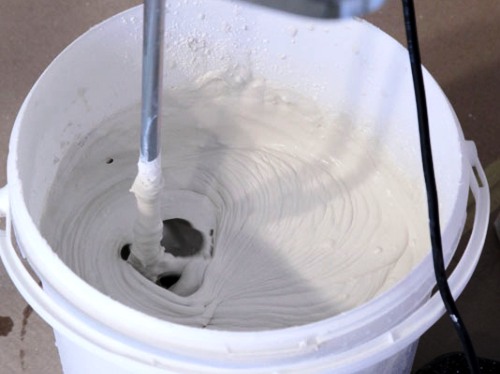
- After you opened the packaging with putty, it must be thoroughly mixed. If the universal putty was excessively thick, in accordance with GOST, it is allowed to breed it with the desired concentration.
- Regardless of the presence or absence of cracks on the surface, experts believe that oil putty falls better on plastered surfaces. The plaster layer in this case must be thoroughly dried. Since in this case the adhesive characteristics of the surface will increase;
- In the case of processing wooden or metal surfaces, before applying putty, fabricated, clean and degrease the processed surface. The wear resistance and characteristics of the finish coating depend on the quality of the measures;
- When processing concrete surfaces, you can apply oil putty without preliminary preparation, however, if you want to be confident in the high quality of the finish coating, experts recommend processing the concrete surface with deep -permanent primer.
Many novice specialists are wondering: How to apply oil putty to the surface if it is already treated with oil paint? Our experts will share with you several secrets.
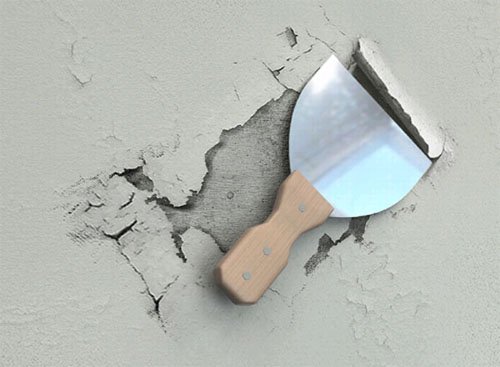
- Firstly, it is important to make sure of the strength of the layer of paint, which should not exfoliate. To make sure of this, it is enough to slightly lift it with a spatula. If you were able to do this, before applying oil putty, the paint layer will have to be cleaned if you can not proceed to leveling the surface;
- If the paint layer turned out to be durable and it can be aligned, it is recommended to fabble the processed surface before applying putty. The strength of the putty layer will depend on the number of scratches applied;
- After you have emphasized the surface, it is necessary to clean it of dust and degrease it. Then, a primer of the concrete contact is applied to the surface, after the drying of which, you can apply oil putty.
Application of oil putty
- Having carried out the preparation of the surface, you can proceed to the direct application of oil putty, which does not represent any difficulties and can be carried out even by a master who does not have sufficient experience.
- Before the direct application of oil putty, the composition is thoroughly mixed, which is necessary so that the olifa is evenly distributed between the filler grains. It is especially necessary to approach the mixing of the material stored for more than 6 months, since in this case the stratification of the composition may be observed;
- For putting putty, it is recommended to use a narrow spatula, which will greatly facilitate the process of work;
- Oil putty is applied to at least two layers, the thickness of which is 1-2 mm. In the case of processing a larger surface, it is recommended to repeat the operation several times, withstanding a pause between approaches;
Important!Due to the fact that a large number of organic substances are used in the composition of putty, when working with it, the recommended temperature regime must be observed, since at a temperature below 10 degrees the putty will begin to crumble.
- To completely dry, the olifa -based putty will require no more than a day. If the finish coating is applied earlier, there is a risk of that. That oil spots will take over on the surface.
Popular manufacturers: oil-roof putty
The popular representative of the described material is the oil-roof putty of the text of the station wagon, which has all the features characteristic of this group of paint and varnishes.

It is designed to align ceilings and walls indoors, which are not characterized by excess humidity. Concrete, wooden, metal and previously plastered surfaces can be finished, before direct coloring with enamels, oil or water-dispersion varnishes. The methodology for working with oil-cell puttying tech universal varies in the case of finishing previously painted and unpainted surfaces and is similar to the presented methodology for working with oil-clay putty of any manufacturer.

